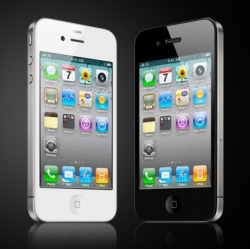
Smartphones could function as warning systems for large earthquakes according to new research. This technology could serve regions of the world that cannot afford higher quality, but more expensive, conventional earthquake early warning systems, or could contribute to those systems.
The study, led by scientists at the U.S. Geological Survey and published April 10 in the inaugural volume of the new AAAS journal Science Advances, found that the sensors in smartphones and similar devices could be used to build earthquake warning systems. Despite being less accurate than scientific-grade equipment, the GPS (Global Positioning System) receivers in a smartphone can detect the permanent ground movement (displacement) caused by fault motion in a large earthquake.
Using crowdsourced observations from participating users’ smartphones, earthquakes could be detected and analyzed, and customized earthquake warnings could be transmitted back to users. “Crowdsourced alerting means that the community will benefit by data generated from the community,” said Sarah Minson, USGS geophysicist and lead author of the study.
Earthquake early warning systems detect the start of an earthquake and rapidly transmit warnings to people and automated systems before they experience shaking at their location. While much of the world’s population is susceptible to damaging earthquakes, EEW systems are currently operating in only a few regions around the globe, including Japan and Mexico. “Most of the world does not receive earthquake warnings mainly due to the cost of building the necessary scientific monitoring networks,” said USGS geophysicist and project lead Benjamin Brooks.
The authors found that the sensors in smartphones and similar devices could be used to issue earthquake warnings for earthquakes of approximately magnitude 7 or larger, but not for smaller, yet potentially damaging earthquakes. Comprehensive EEW requires a dense network of scientific instruments. Scientific-grade EEW, such as the U.S. Geological Survey’s ShakeAlert system that is currently being implemented on the west coast of the United States, will be able to help minimize the impact of earthquakes over a wide range of magnitudes. However, in many parts of the world where there are insufficient resources to build and maintain scientific networks, but consumer electronics are increasingly common, crowdsourced EEW has significant potential.
“The U.S. earthquake early warning system is being built on our high-quality scientific earthquake networks, but crowdsourced approaches can augment our system and have real potential to make warnings possible in places that don’t have high-quality networks,” said Douglas Given, USGS coordinator of the ShakeAlert Earthquake Early Warning System. The U.S. Agency for International Development has already agreed to fund a pilot project, in collaboration with the Chilean Centro Sismológico Nacional, to test a pilot hybrid earthquake warning system comprising stand-alone smartphone sensors and scientific-grade sensors along the Chilean coast.
“The use of mobile phone fleets as a distributed sensor network, and the statistical insight that many imprecise instruments can contribute to the creation of more precise measurements, has broad applicability including great potential to benefit communities where there isn’t an existing network of scientific instruments,” said Bob Iannucci of Carnegie Mellon University, Silicon Valley.
